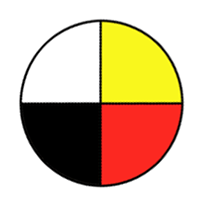Science 7
Physical Science: Heat and Temperature
HT
Outcomes
|
|
| Assess the impact of past and current heating and cooling technologies related to food, clothing, and shelter on self, society, and the environment. (TPS, DM, CP) |
|
|
| Explain how understanding differences between states of matter and the effect of heat on changes in state provide evidence for the particle theory. (SI) |
|
|
| Investigate principles and applications of heat transfer via the processes of conduction, convection, and radiation. (SI) |
Loading...


R050388
Pearson Saskatchewan Science 7. Student Text
Saskatchewan Science 7 is custom published for Saskatchewan and developed by a team of Saskatchewan teachers. Each unit starts with a list of Big Ideas that sets the focus for the unit. A Big Idea then provides the title for each section in the unit. Throughout the unit, opportunities are provided for students to work together, communicate ideas, perform experiments and carry out library and Internet research. Key vocabulary is bolded throughout the unit and an explanation of each term is provided. All key terms and explanations are also listed in a glossary at the back of the text. First Nations and Métis content, perspectives and ways of knowing are an integral part of the Saskatchewan science text. Highlights of the activities and achievements of Saskatchewan men and women are provided in the "Ask ..." feature. In each unit, the "Ask ..." feature provides access to the wisdom of a First Nations or Métis Elder or Traditional Knowledge Keeper, who shares an oral story related to the content of that unit.
(More information)
•
Pearson Saskatchewan Science 7. Student Edition E-Book CD
•
Pearson Saskatchewan Science 7. Teacher Resource
Media and Formats :
Book
Price :
$102.38



Record posted/updated:
November 28, 2018

R071697
Transformed. How Everyday Things are Made
Slavin shows the process of how objects are changed from raw materials to the finished products. He uses common items that students are familiar with, such as baseballs. Each two-page spread describes how the object is made by breaking the process down into steps. Illustrations complement the text and show the technology behind the science. Slavin demonstrates the connection between science and technology in making objects. The book includes a table of contents, a glossary, suggestions for further research and an index.
(More information)

R054783
After Life: The Strange Cycle of Decay
This video explains decomposition, one of nature's most important processes. For two months in the summer of 2011, a glass box containing food laid out from a typical kitchen and garden for a family of four was left to rot in full public view within Edinburgh Zoo. In this resulting documentary, presenter Dr. George McGavin and his team use time-lapse cameras and 3-D photography to capture the way in which moulds, microbes and insects are able to break down our everyday things and allow new life to emerge from old. The film reveals the incredible science of taphonomy, discovering what happens to organic matter as it starts to decompose. Whole new ecosystems of life invade, each more complex than you would ever expect. The micro-organisms involved in turning milk sour, lactobacillus, are highlighted; in addition to pseudomonas, micro-organisms that make meat smell; and botrytis cinerea, those that make fruit and vegetables go velvety grey.
Microbiology gives us insight into the part played by bacteria, yeasts and fungi. Biochemistry reveals how the chemical processes in living organisms cause change. Entymology reveals the vital role of insects in the great cycle of decay. The video also explores the incredible science behind preservation, from new food packaging and chemical additives to UV radiation and osmotic pressures.
Microbiology gives us insight into the part played by bacteria, yeasts and fungi. Biochemistry reveals how the chemical processes in living organisms cause change. Entymology reveals the vital role of insects in the great cycle of decay. The video also explores the incredible science behind preservation, from new food packaging and chemical additives to UV radiation and osmotic pressures.
(More information)


